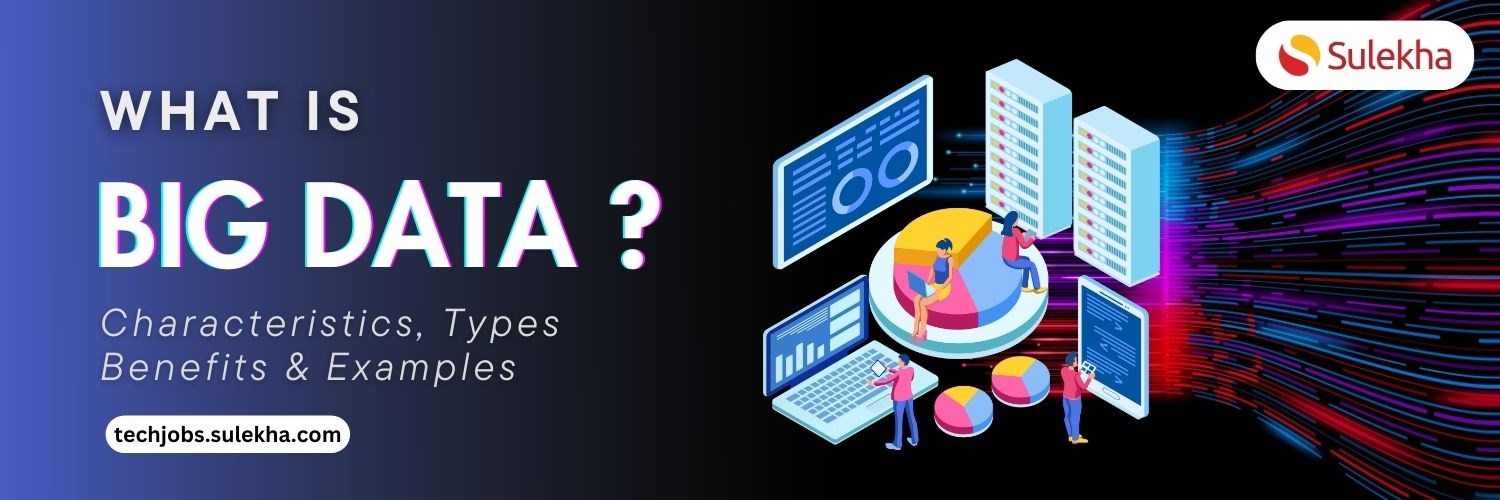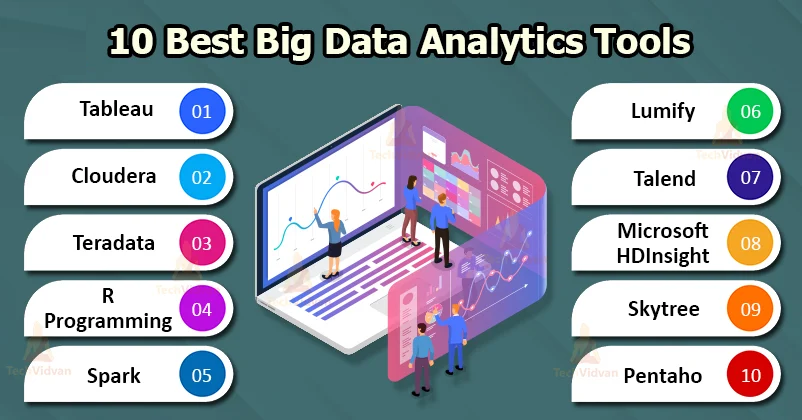Handling the Security Breaches of Big Data!
Big Data is an immensely popular talking point, but from a security perspective, there are two distinct issues, in particular, are discussed a lot: securing the enterprise and its customers’ information in a Big Data context; and using fail-proof and safe Big Data techniques to analyze, and predict, secure incidents. One of the incredible things that big data do is that it blows away the last vestiges of platform security issues and endpoint-centric security paradigms. Many organizations training the workforce on Big Data are often aiming to protect their information resource from any security breach.

Big data means terabytes, petabytes, and Exabyte of data which means huge clusters of data in almost all sorts of formats and file extensions. Those data are getting transferred into many new and different software packages -- many of which treat security as a secondary or tertiary requirement. Big data also means the business wants up-to-the-hour (or more frequent) results, so forget about that iron-fisted control IT had over traditional data warehouse/business intelligence models. Any IT department that tries to hold to the security paradigms of 10, or even five, years ago will go the way of the slide-rule salesman. If you can't adapt, you aren't needed.
Security today is more difficult to navigate, it's more expensive, and there will be breaches no matter what we do. From a policy and budget perspective, the introduction of big data into an organization may be a tipping point for full adoption of modern security practices. It's time to get started.
Many businesses in existence already use Big Data technology for marketing and research, yet may not have the fundamentals right – particularly from a security perspective. As with all new technologies, security seems to be an afterthought at best. Big Data security breaches will be big too when we take into account potential for more critical serious reputational damage and legal repercussions than at present.
A growing number of companies are using the technology to store and analyze petabytes of data including weblogs, click stream data, and social media content to gain better insights about their customers and their business.
Security Incident and Event Management Systems (SIEM)

The deployment of Big Data for fraud detection, and in place of a security incident and event management (SIEM) systems, is attractive to many organizations. The overheads of managing the output of traditional SIEM and logging systems are proving too much for most IT departments and Big Data is seen as a potential savior. There are commercial replacements available for existing log management systems, or the technology can be deployed to provide a single data store for security event management and enrichment.
Find a course provider to learn Big Data
Java training | J2EE training | J2EE Jboss training | Apache JMeter trainingTake the next step towards your professional goals in Big Data
Don't hesitate to talk with our course advisor right now
Receive a call
Contact NowMake a call
+1-732-338-7323Take our FREE Skill Assessment Test to discover your strengths and earn a certificate upon completion.
Enroll for the next batch
big data full course
- Sep 1 2025
- Online
Big Data
- Sep 2 2025
- Online
big data full course
- Sep 3 2025
- Online
Big Data
- Sep 4 2025
- Online
big data full course
- Sep 5 2025
- Online
Related blogs on Big Data to learn more

What is Big Data – Characteristics, Types, Benefits & Examples
Explore the intricacies of "What is Big Data – Characteristics, Types, Benefits & Examples" as we dissect its defining features, various types, and the tangible advantages it brings through real-world illustrations.

Top 10 Open-Source Big Data Tools in 2024
In the dynamic world of big data, open-source tools are pivotal in empowering organizations to harness the immense potential of vast and complex datasets. Moreover, as we enter 2024, the landscape big data tools and technologies continues evolving be

AWS Big Data Certification Dumps Questions to Practice Exam Preparation
Certification in Amazon Web Service Certified Big data specialist will endorse your skills in the design and implementation of the AWS services on the data set. These aws big data exam questions are prepared as study guide to test your knowledge and

Top 25 Big Data Questions and Answers for Certification Passing score
You can appear for big data certification exam with confidence and come out with certification. We have prepared a bunch of important big data exam questions along with the correct answer and the explanation for the right answer. Utilize these sample

Sixth Edition of Big Data Day LA 2018 - Register Now!
If you’re keen tapping into the advances in the data world, and currently on a quest in search engines, looking for Big Data conferences and events in the USA, there is a big one coming up your way! Yes, the sixth annual edition of Big Data Day LA

15 Popular Big Data Courses to learn for the future career
We have found a list of big data courses that are necessarily required for the future. Professionals and freshmen who are learning these courses prepare the participants to see bigdata careers with high pay jobs.

Best countries to work for Big Data enthusiasts
China is fast becoming a global leader in the world of Big Data, and the recently held China International Big Data Industry Expo 2018

Top Institutes to enroll for Big Data Certification Courses in NYC
If achieving a career breakthrough is hard, harder is sustaining a long-run. Why? Organizations are focusing on New Yorkers who can work dynamically and leverage their skills from the word go, and that’s why.

The emergence of Cloudera
Cloudera is the leading worldwide platform provider of Machine Learning. There is reportedly an accelerated momentum in the Cybersecurity market.
Latest blogs on technology to explore

Understanding Artificial Intelligence: Hype, Reality, and the Road Ahead
Explore the reality of Artificial Intelligence (AI) — its impact, how it works, and its potential risks. Understand AI's benefits, challenges, and how to navigate its role in shaping industries and everyday life with expert training programs

How Much Do Healthcare Administrators Make?
Discover how much healthcare administrators make, the importance of healthcare, career opportunities, and potential job roles. Learn about salary ranges, career growth, and training programs with Sulekha to kickstart your healthcare administration jo

How to Gain the High-Income Skills Employers Are Looking For?
Discover top high-income skills like software development, data analysis, AI, and project management that employers seek. Learn key skills and growth opportunities to boost your career.

What Companies Expect from Product Managers in 2025: Skills, Tools, and Trends
Explore what companies expect from Product Managers in 2025, including essential skills, tools, certifications, and salary trends. Learn how to stay ahead in a rapidly evolving, tech-driven product management landscape.

Breaking Into AI Engineering: Skills, Salaries, and Demand in the US
Discover how to break into AI engineering with insights on essential skills, salary expectations, and rising demand in the US. Learn about career paths, certifications, and how to succeed in one of tech’s fastest-growing fields.

Cybersecurity Training: Powering Digital Defense
Explore top cybersecurity training programs in the USA to meet rising demand in digital defense. Learn about certifications, salaries, and career opportunities in this high-growth field.

Why Pursue Data Science Training?
Empower your career in a data-driven world. Learn why data science training is crucial for high-demand jobs, informed decisions, and staying ahead with essential skills.

What Does a Cybersecurity Analyst Do? 2025
Discover the vital role of a Cybersecurity Analyst in 2025, protecting organizations from evolving cyber threats through monitoring, threat assessment, and incident response. Learn about career paths, key skills, certifications, and why now is the be

Artificial intelligence in healthcare: Medical and Diagnosis field
Artificial intelligence in healthcare: Medical and Diagnosis field

iOS 18.5 Is Here: 7 Reasons You Should Update Right Now
In this blog, we shall discuss Apple releases iOS 18.5 with new features and bug fixes
